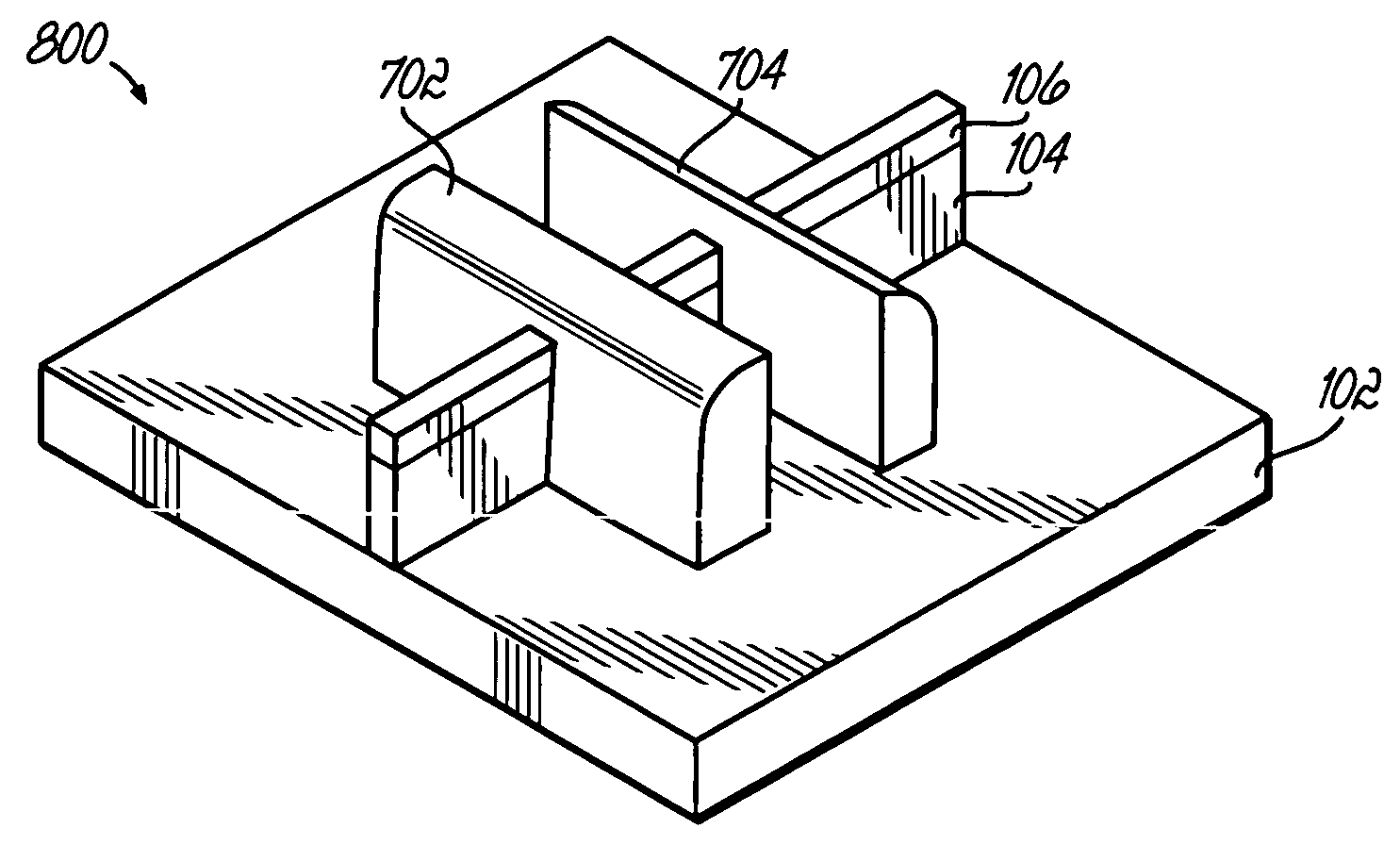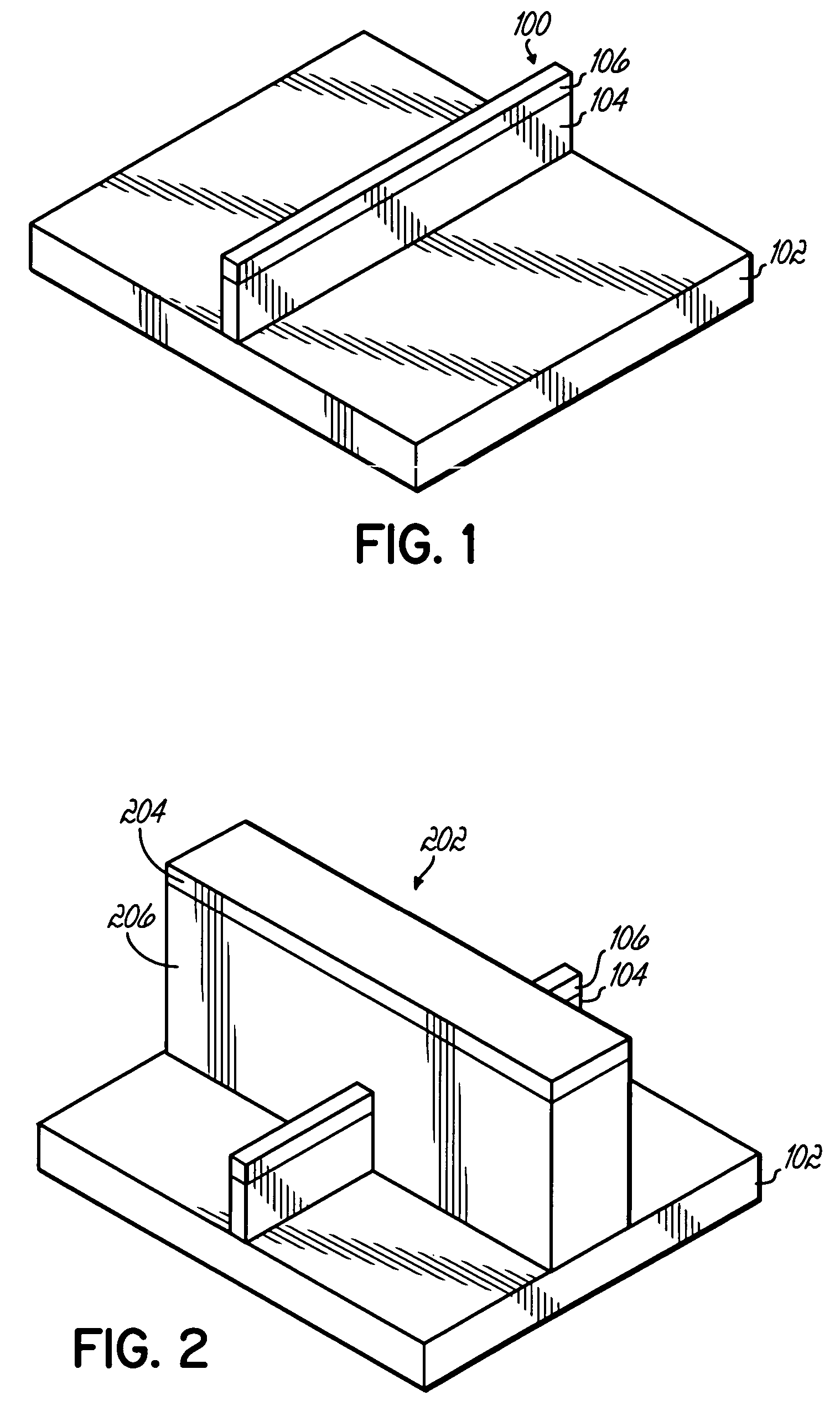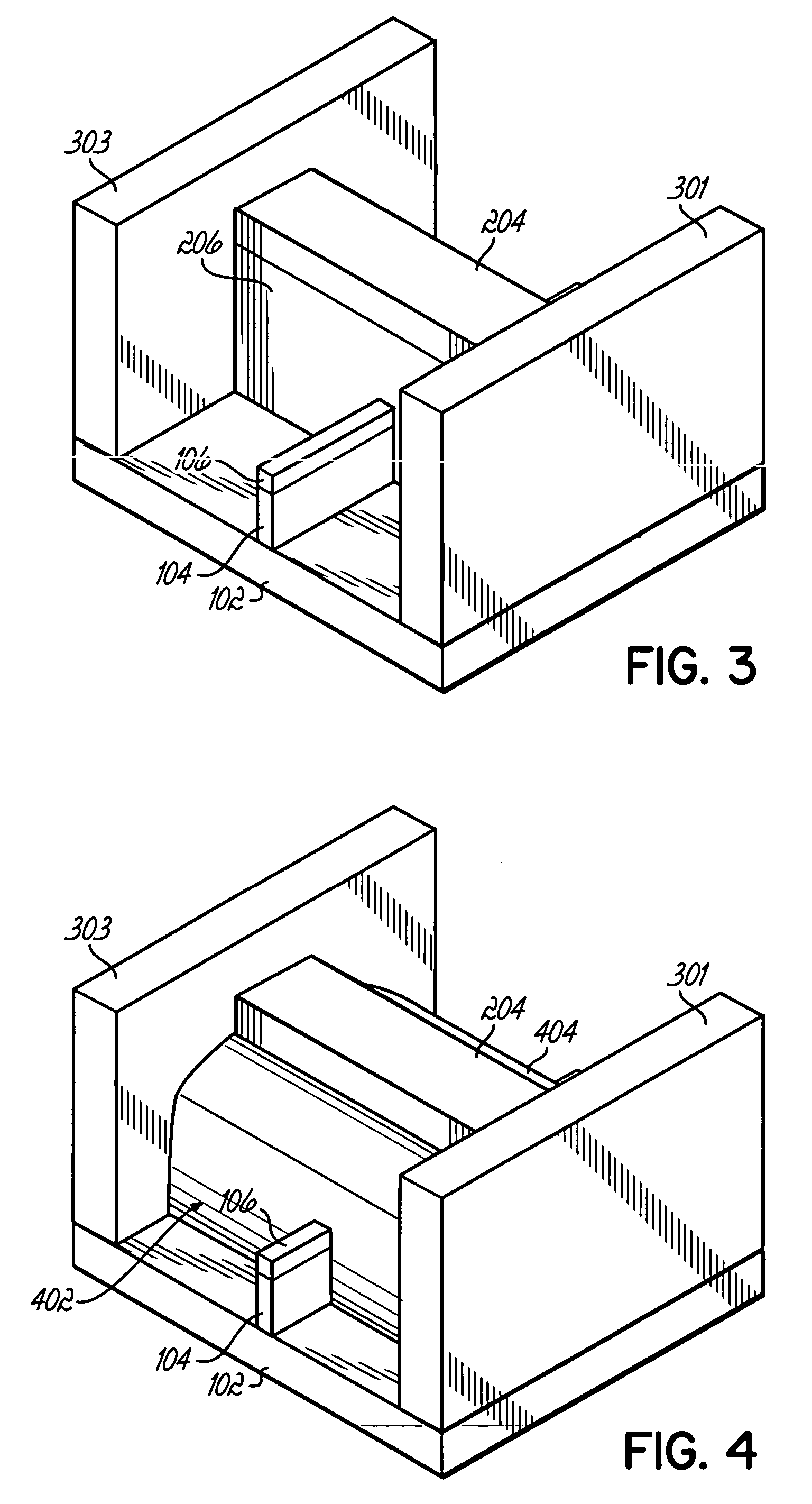Method of forming FinFET gates without long etches
a technology of finfet gate and etches, which is applied in the field of dual-gated transistors, can solve the problems of large variation in current from the source to the drain, large input impedance of mosfet, and long vertical distance over which the spacer runs, so as to achieve accurate and reliable formation, accurate growth, and accurate control of height and thickness of the resulting finfet gate
- Summary
- Abstract
- Description
- Claims
- Application Information
AI Technical Summary
Benefits of technology
Problems solved by technology
Method used
Image
Examples
Embodiment Construction
[0019]FIG. 1 depicts an initial structure in forming the FinFET. Using conventional photolithography techniques, a capped semiconductor fin 100, such as silicon, is formed on an insulating substrate 102. The capped semiconductor fin 100 includes protective nitride film 106 that is formed along the top of the semiconductor material 104. Next, referring to FIG. 2, a mandrel 202 is formed across the fin 100. Mandrel 202 is an organic material, the surface of which is then modified by exposure to a sililating agent such as hexamethyl-cyclotrisilazane or hexamethyl-disilazane. This exposure converts the surface of the mandrel 202 to a silicon containing organic polymer. This surface layer is subsequently oxidized in a dry oxygen containing plasma, such as RIE, downstream ozone, or such. As a result, the mandrel 202 is formed so as to facilitate selective oxide growth in liquid phase oxide deposition, but can be selectively stripped with respect to the growth oxide.
[0020]The mandrel mater...
PUM
 Login to View More
Login to View More Abstract
Description
Claims
Application Information
 Login to View More
Login to View More - R&D
- Intellectual Property
- Life Sciences
- Materials
- Tech Scout
- Unparalleled Data Quality
- Higher Quality Content
- 60% Fewer Hallucinations
Browse by: Latest US Patents, China's latest patents, Technical Efficacy Thesaurus, Application Domain, Technology Topic, Popular Technical Reports.
© 2025 PatSnap. All rights reserved.Legal|Privacy policy|Modern Slavery Act Transparency Statement|Sitemap|About US| Contact US: help@patsnap.com



